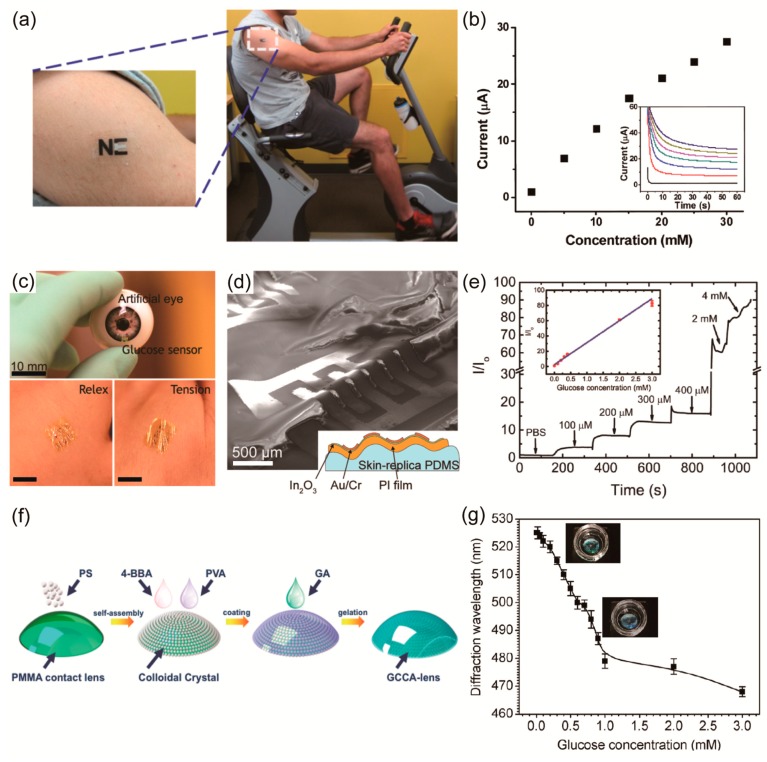Figure 6.
Wearable biosensors (a) The images of the temporary transfer-tattoo biosensor attached on deltoid. (b) Amperometric response as a function of lactate concentration for the sensor at 37 °C. Inset: profiles of current at different lactate concentrations. Reprinted with permission from [136]. Copyright 2013, American Chemical Society. (c) Conceptual images of conformally contacted devices on an artificial eye for glucose sensing in tears are shown. Thin-film sensors remained in contact with skin even during tension and relaxation (scale bars 10 mm). (d) Scanning electron microscope image of a representative device (thickness of 1.7 μm) on an artificial PDMS skin replica indicating conformal contact between the device and the substrate (scale bar 500 μm). (e) Representative responses of In2O3 sensors to physiologically relevant d-glucose concentrations found in human diabetic tears (lower range) and blood (upper range). Inset: data from five devices. Error bars represent standard deviations of the means. Reprinted with permission from Ref. [40]. Copyright 2013, American Chemical Society. (f) The preparation route of the 4-boronobenzaldehyde (4-BBA)-modified poly(vinyl alcohol) (PVA) gelated colloidal crystal array (GCCA)-lens. (g) The diffraction response at low glucose concentration. Insert: the photograph of the GCCA-lens sample. Reprinted with permission from Ref. [144]. Copyright 2017, MDPI AG.

